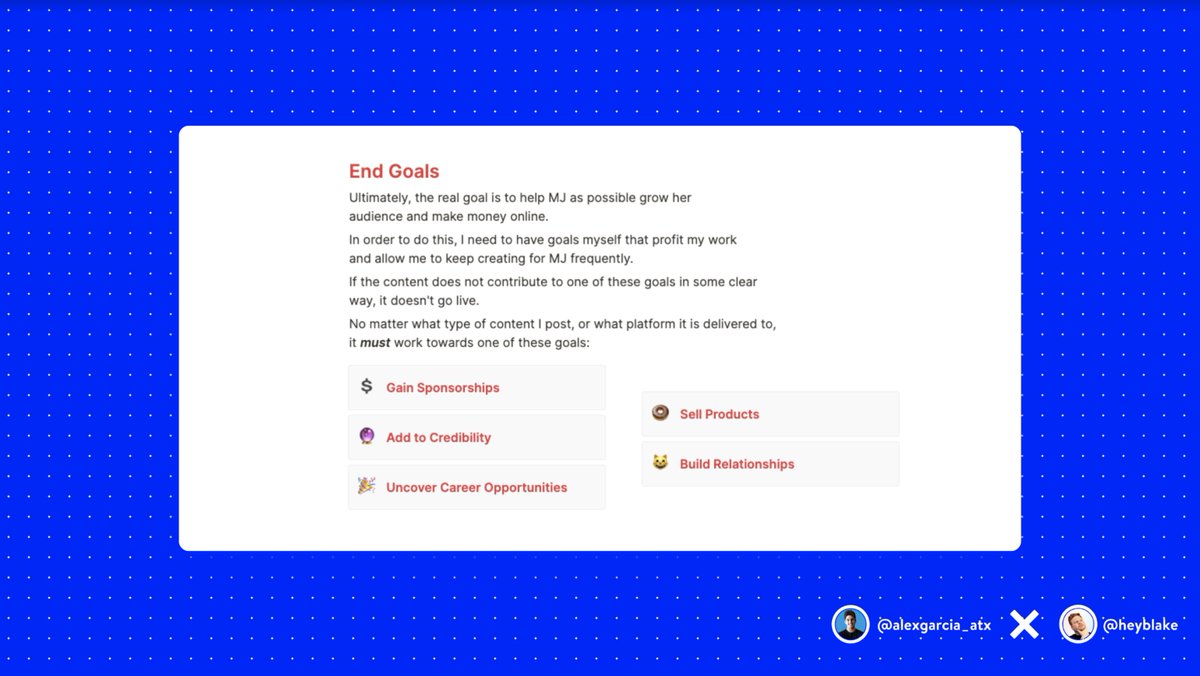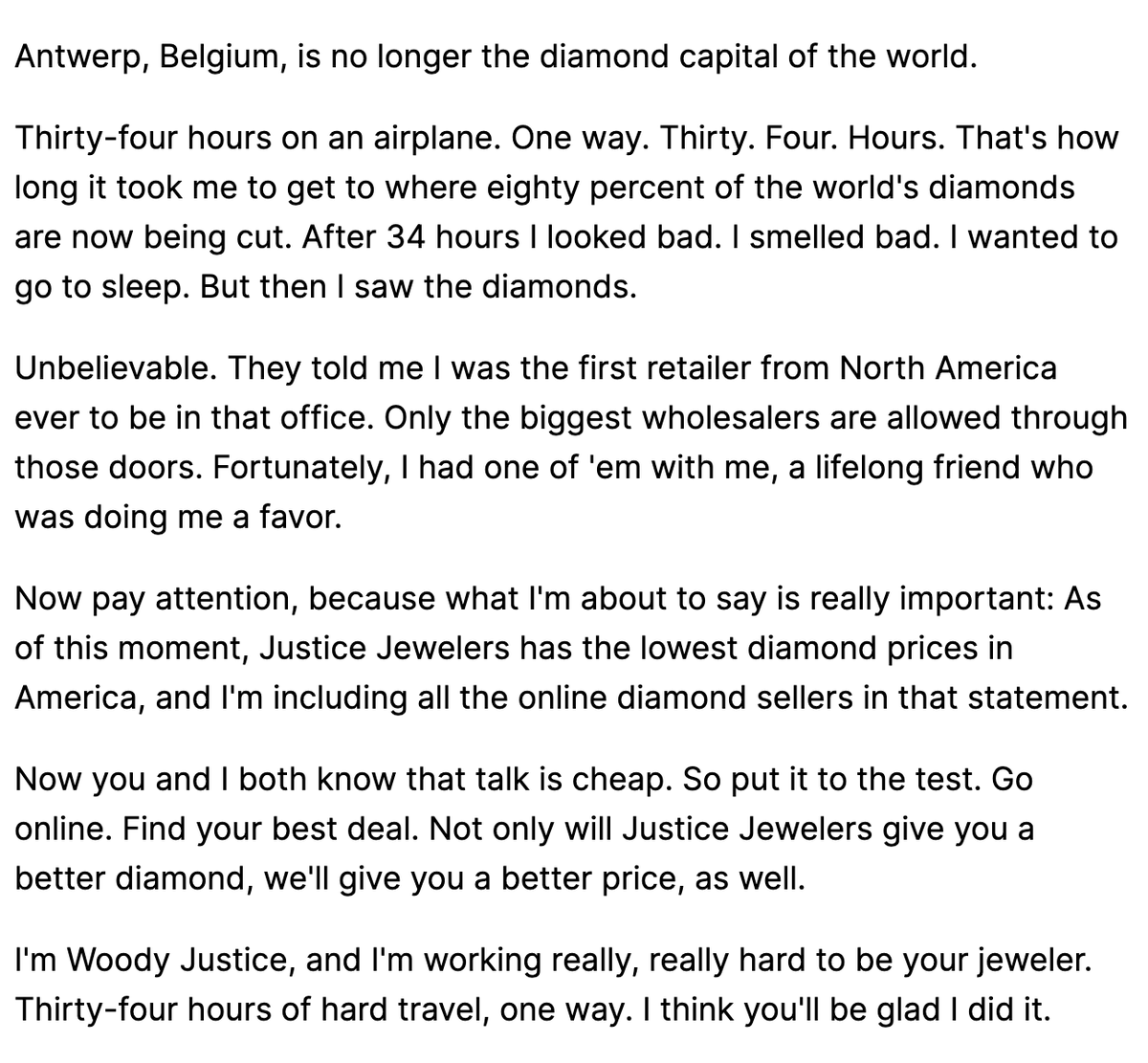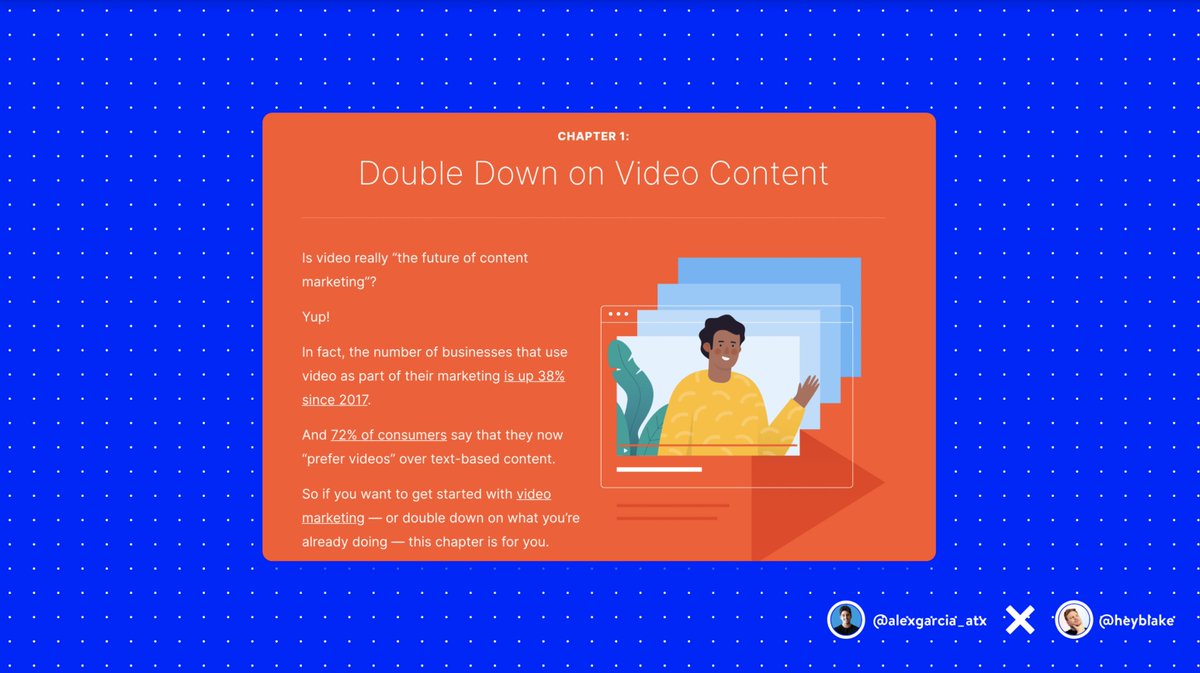1. Theory of reciprocity
As humans, we’re more likely to do something for someone after they’ve done something for us.
When you consistently provide value to your audience -- they’re more likely to reciprocate by supporting you.
This builds brand advocates.
2. Too many choices
Too many choices means too much confusion.
This affects a consumer's ability to make a decision and demotivates them from doing so.
Reduce your options.
Increase your conversion rate.
3. Decoy Effect
Perspective influences decisions.
With the decoy effect, you alter the consumer’s perspective by making the highest ticket item look like a deal.
Ex:
Small Popcorn: $3
Medium Popcorn: $6.50
Large Popcorn: $7
The large feels like a great deal.
4. The Baader-Meinhof Phenomenon
This phenomenon is when you see something for the first time then feel like you start seeing it everywhere.
Once you become aware of something you start to look for it unconsciously.
This then convinces you that it really is everywhere.
5. Halo Effect
It’s easier to get an existing customer to make another purchase than to acquire a new customer.
This is the halo effect.
A great experience with your company or product will unconsciously create a positive perspective about you across the boards.
6. Scarcity
The fear of missing out is real.
People want what feels unavailable.
By creating scarcity, you get consumers to act quicker.
7. Serial Positioning
People tend to remember the first few words and the last few words.
It’s called the primacy vs recency effect.
To optimize this, rearrange your info.
Put the most valuable info at the beginning and the end.
8. Personalization
We naturally prefer personalized experiences.
A personalized experience where we feel like our interests and preferences are accounted for.
People don’t want a one-size-fits-all.
They want a one of one.
9. Social Proof
It’s easier to make a decision after you see someone else make it and be happy with their decision.
This is why social proof matters.
It gives context regarding the post-satisfaction of making a decision.
This will help consumers make conditional decisions.
10. Risk Aversion
Objections keep people from making decisions.
To counteract this, use risk aversion to tackle these objections.
Examples:
- 7-day free trial - No CC needed
- 30 Day money-back guarantee
- Your info is safe and secure
11. Create an enemy
The social identity theory is where a person’s sense of self is based on a group they identify with.
To create an even deeper connection, have an enemy.
Apple did this with their Mac vs PC ads.
It created an enemy that all Apple users could get behind.
12. Foot in the Door
Not everyone is ready to drop x amount of dollars.
The foot in the door technique makes the initial commitment, simple and easy.
It leverages time to build confidence in your product.
Example: A 30-day free trial
Would this help you?
- marketing breakdowns
- copywriting tips
- how-tos
- growth strategies
- campaign dissection
If so, follow
@alexgarcia_atx :)
And R/T that first tweet for me, please. It helps a lot.
If you rather join the 7500+ marketers who receive my weekly newsletter then tap here👇
https://t.co/yci9t399mp
TL;DR
1. Theory of reciprocity
2. Limit choices
3. Use a decoy
4. Create The Baader-Meinhof Phenomenon
5. Create a positive halo-effect
6. Create FOMO
7. Best info in the front & end
8. Personalize
9. Tackle objections
10. Find an enemy
11. Social proof
12. Foot in the door




